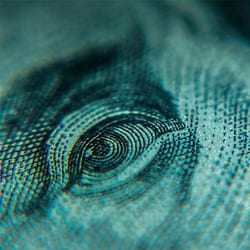By Maddy Scannell
Research Intern
McNair Center for Entrepreneurship and Economic Growth
Banks are set to earn millions from the Paycheck Protection Program (PPP), a federal relief program for small businesses. Since the PPP’s passage in April, the Small Business Administration (SBA) has issued $521 billion in loans through banks, with an average loan size of $107,000.[1] But with rapidly changing guidelines, lawsuits, and uncertain forgiveness processes, will the PPP ultimately be a boon or a headache for banks?
Revenue Boon
PPP loans are technically risk-free for banks (with zero-percent risk-weight mandated in §1102(O) of the CARES Act). Banks also profit off of fees on the loans, paid by the SBA instead of the borrower. Higher fees are charged on smaller loans, with 5% assessed on loans under $350,000 and 1% on loans over $2 million.[2] Across roughly 200 banks, analysts from the investment bank Keefe, Bruyette & Woods reported a median fee of 3%.[3]
The Federal Reserve’s liquidity facility disclosures reveal that dozens of small banks are poised to earn as much from PPP loans as they reported in net revenue for the entirety of 2019. Analysis by S&P Global Market Intelligence indicates that small banks, with assets under $250 million, are set up for a windfall, and even banks with over $1 billion in assets might surpass 2019 pre-provision net revenue in PPP fees.[4] For the largest banks, PPP fees only modestly affect revenue, despite these banks processing significantly more PPP loans. JPMorgan Chase has issued the most PPP loans of all banks—$28.8 billion in total—which would yield an estimated $863.9 million in fees at the median rate, or about 2% of the bank’s 2019 pre-provision net revenue.[5]
Programs like the PPP offer lenders an avenue to put their deposits to work, as more banks face a surge in deposits. Since coronavirus reached the United States in January, bank deposits have grown by $2 trillion.[6] In just the month of April, deposits increased by $865 billion, more than the previous record for an entire year.[7] In response, banks are cutting interest rates, with a national average of just 0.06 percent for savings accounts, as the Federal Reserve holds rates low.[8],[9] As the government renews payouts to businesses and consumers, deposits may remain high throughout 2020 due to these injections of additional liquidity.
Costs and Risks
Although the fees earned on PPP loans are attractive and making these loans enables banks to utilize deposits, banks do not view PPP loans as risk-free. There are concerns of legal liability; several big banks are facing class-action lawsuits over their implementation of the program.[10] Moreover, banks hold the responsibility for determining if a borrower qualifies for loan forgiveness, requiring increased labor costs.[11] Because the specifics regarding loan forgiveness are still in flux, banks may be required to adjust the timing and amount of revenue associated with the loans.[12] Indeed, though the PPP was set to expire on July 30, lawmakers have extended the loan application deadline until August 8.[13] Uncertainty surrounding the program compounds lenders’ ongoing economic uncertainty, as banks are already under scrutiny for expected pandemic-related loan losses.[14]
Thus, given that the CARES Act and SBA permit resale, some banks are turning to the secondary market where nonbanks like The Loan Source are buying up PPP loans.[15],[16] Though the sale of loans cuts into lenders’ revenue, it allows banks to recognize fees immediately (as opposed to waiting for forgiveness or repayment). It also transfers the obligations of service and forgiveness processing to the loan purchaser. This transfer can be especially important for smaller banks, who typically have less service infrastructure and may need more of a buffer against loan defaults triggered by an economic downturn.[17]
Conclusion
As the institutions responsible for processing PPP loans, banks play a critical role in small business recovery. But banks face a complex network of incentives and economic factors. The uncertainties of both the PPP and the broader economy add new layers of risk to PPP loans that are designated zero-percent risk-weight. Still, the incentive structure sets up lenders to make millions in fees, which ultimately makes a big difference for small community banks.
References
[1] https://home.treasury.gov/news/press-releases/sm1052
[2] https://home.treasury.gov/system/files/136/PPP%20Lender%20Information%20Fact%20Sheet.pdf?
[3] https://fortune.com/2020/07/06/ppp-loans-interest-banks-small-business-loan-fees/
[4] https://www.spglobal.com/marketintelligence/en/news-insights/latest-news-headlines/us-banks-stack-millions-in-ppp-loan-fees-but-risks-abound-59282449
[5] https://www.spglobal.com/marketintelligence/en/news-insights/latest-news-headlines/us-banks-stack-millions-in-ppp-loan-fees-but-risks-abound-59282449
[6] https://www.federalreserve.gov/releases/h8/current/
[7] https://www.cnbc.com/2020/06/21/banks-have-grown-by-2-trillion-in-deposits-since-coronavirus-first-hit.html
[8] https://www.fdic.gov/regulations/resources/rates/
[9] https://www.federalreserve.gov/releases/H15/default.htm
[10] https://www.foxbusiness.com/money/wells-fargo-chase-sued-over-handling-of-paycheck-protection-program-loans
[11] https://www.spglobal.com/marketintelligence/en/news-insights/latest-news-headlines/us-banks-stack-millions-in-ppp-loan-fees-but-risks-abound-59282449
[12] https://www.wsj.com/articles/small-businesses-tackle-new-ppp-puzzle-forgiveness-11592136025
[13] https://www.nytimes.com/2020/06/30/us/politics/ppp-extension.html
[14] https://www.nytimes.com/reuters/2020/07/09/business/09reuters-health-coronavirus-banks-creditlosses.html
[15] https://www.natlawreview.com/article/covid-19-update-paycheck-protection-program-and-secondary-market
[16] https://www.spglobal.com/marketintelligence/en/news-insights/latest-news-headlines/us-banks-stack-millions-in-ppp-loan-fees-but-risks-abound-59282449
[17] https://www.spglobal.com/marketintelligence/en/news-insights/latest-news-headlines/us-banks-stack-millions-in-ppp-loan-fees-but-risks-abound-59282449
